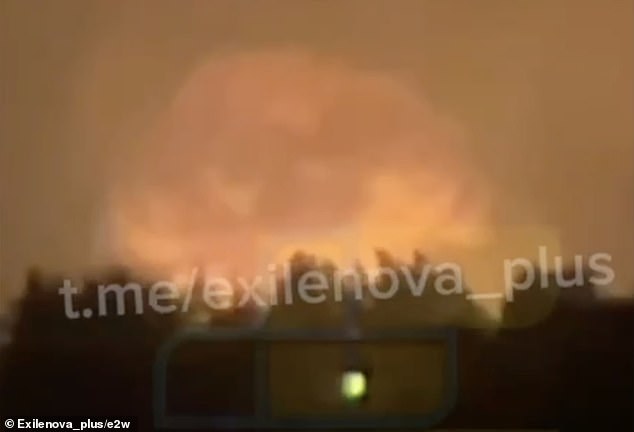The war raging in Eastern Europe is now at its most critical stage. In recent days, the conflict between Russia and Ukraine has threatened to turn into a global conflagration.
North Korea has sent 10,000 troops to reinforce Putin’s forces and the US has allowed the use of its long-range missiles on targets on Russian territory.
Can the war continue to be fought exclusively between Kiev and Moscow?
Within hours of US President Joe Biden authorizing Ukraine to use the ATACMS (Army Tactical Missile Systems), President Zelensky launched an attack.
At 3:25 am local time yesterday morning, six ATACMS were fired at a Russian military facility – reportedly used to store grenades supplied by North Korea – in the Bryansk region, just 130 kilometers from the Ukrainian border.
When asked about the weapons on Sunday, Zelensky laconically noted that missiles will speak for themselves. Now they have roared.
One only has to listen to the escalation of rhetoric from an angry President Putin to understand how hard the blow has been felt in the Kremlin.
Even before the ATACMS missile was fired, he had issued a revised nuclear doctrine declaring that an attack on Russia by a country backed by a nuclear power would be considered a joint attack by both countries.
An explosion at an ammunition warehouse in Karachev, Russia, on Tuesday as Ukraine carried out its first attack on Russian territory with US-supplied long-range missiles
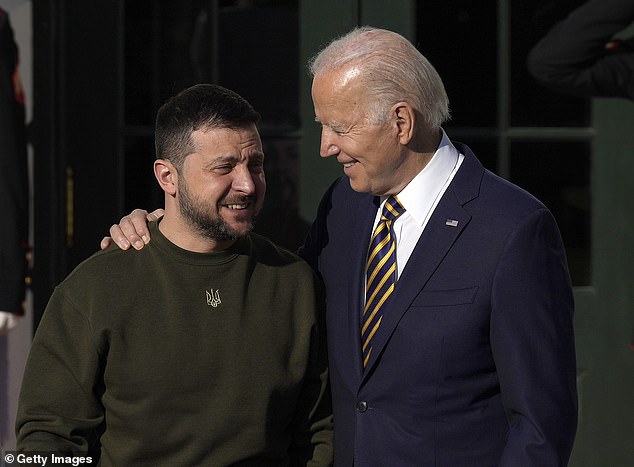
Joe Biden finally authorized Ukrainian President Volodymyr Zelensky this weekend to use US-supplied missiles in attacks inside Russia
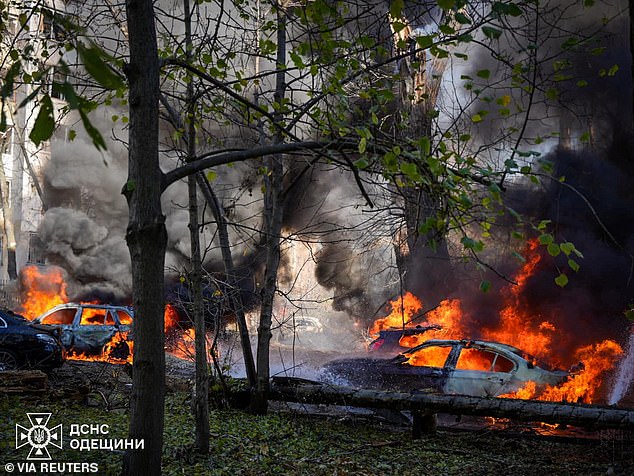
Cars burned and buildings were destroyed when a residential area was hit by a Russian missile attack in Odesa, Ukraine, on Monday.
In other words, if Washington allowed Ukraine to fire American missiles at Russia, Moscow would view the Americans as directly involved in the war in Ukraine.
Russian Foreign Minister Sergei Lavrov accused the West of “escalation” and said the ATACMS were operated by “American military experts.” And indeed, these missiles can only be fired by American personnel and with the help of American satellite data.
The response Russia has promised is cataclysmic, with a senior politician close to Putin saying that firing the missiles would be a ‘big step towards World War III’.
Two weeks ago, Putin warned that Russia would respond to any attack from the West with “overwhelming nuclear firepower” and, to underline his point, conducted nuclear exercises with missiles fired from land, sea and air.
Frightening stuff – and yet this is hardly the first time Western leaders have ignored one of Vladimir Putin’s red lines, and each time they do so without the Russian president following through on these tyrannical threats and nuclear bluster.
At the start of the invasion of Ukraine in February 2022, Putin warned that any Western interference would have consequences “like you have never seen in your entire history.”
Since then, he has used blood-curdling threats to intimidate the West into inaction – an approach that has proven highly effective, with risk-averse Western leaders fatally weighing in on every decision.
From the use of tanks to fighter jets and long-range missiles, the West hesitated before finally giving the green light.
Had the ATACMS been deployed six months ago, Ukraine’s current energy crisis caused by the unprecedented destruction of its power plants could have been averted.
We can’t yet know for sure what damage these six ATACMs caused, or even how many got through, but the Russians have admitted there was a fire at the base. Undeniably, a new line has been crossed and there is no turning back.
So how concerned should we be? There is no doubt that with every line crossed the risk increases. Russia is showing signs of increasing belligerence towards the West.
Earlier this month, for example, Royal Navy ships were called in to escort the Russian frigate Admiral Golovko, armed with hypersonic missiles, through the English Channel to its destination in the Atlantic Ocean, where it is currently conducting exercises.
Other Russian ships are prowling the seas over vital internet cables and, perhaps more worryingly, at least one Chinese vessel appears to have dropped its anchor over such cables connecting Germany and Scandinavia – a prescient warning of the fragility of communications in the West and for where China stands.
The arrival of more than 10,000 North Korean soldiers at the border with Ukraine shows how the conflict is spreading. Now that South Korea is supplying ammunition to Kiev, the risk of a new Korean war also looms.
This should all be a collective wake-up call for the West, which may have grown complacent about a brutal war now well into its third year, as if it were merely a feature of the landscape and not a potentially all-consuming monster.
The dangerous events of the past few days should powerfully shake us out of such feelings.
As Putin’s new nuclear doctrine makes clear, if the Prime Minister were to follow in President Biden’s footsteps and allow Ukraine to use our Storm Shadow cruise missiles, this could make our island a Russian target.
Even without the terrifying prospect of nuclear weapons, the risk of hybrid warfare is now high – and may even be unfolding.
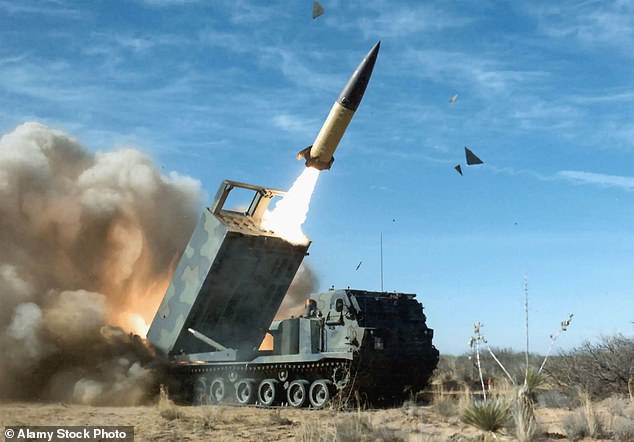
An ATACMS – Army Tactical Missile Systems – is fired from an M270 Multiple Launch Rocket System
In addition to the sabotage of internet cables, Western security officials also suspect that Russia was behind a plot earlier this month to put incendiary devices in packages of cargo planes bound for North America.
One caught fire at a courier center in Germany and another, disguised as an electric massager, ignited in a warehouse in Birmingham.
Both would be powerful enough to crash a plane. There is also the grim prospect of using thermobaric bombs (which disperse fuel before igniting in a cloud that can vaporize human bodies), deployed by the US military in Afghanistan and dubbed “the mother of all bombs.”
Not nuclear, but just as devastating as a tactical nuclear bomb. Perhaps one could act as a ‘warning’ to NATO by eliminating the airbase in eastern Poland near Rzeszow – the hub for the transfer of weapons from the US to neighboring Ukraine.
All this is alarming enough, but this unfolding crisis – a crisis as threatening to global geopolitical stability as the 1962 Cuban Missile Crisis – is taking place against the backdrop of a deeply worrying power vacuum in Washington.
John F Kennedy was in his mid-40s during the Cuban Missile Crisis. Sixty-two years later, the current chairman of the Oval Office is 81 years old and says he is no longer fit to hold office.
Unlike the Kremlin, the White House lacks a strong leader. A weak and lame president, surrounded by factions, will soon give way to the unknown quantities of a Trump administration.
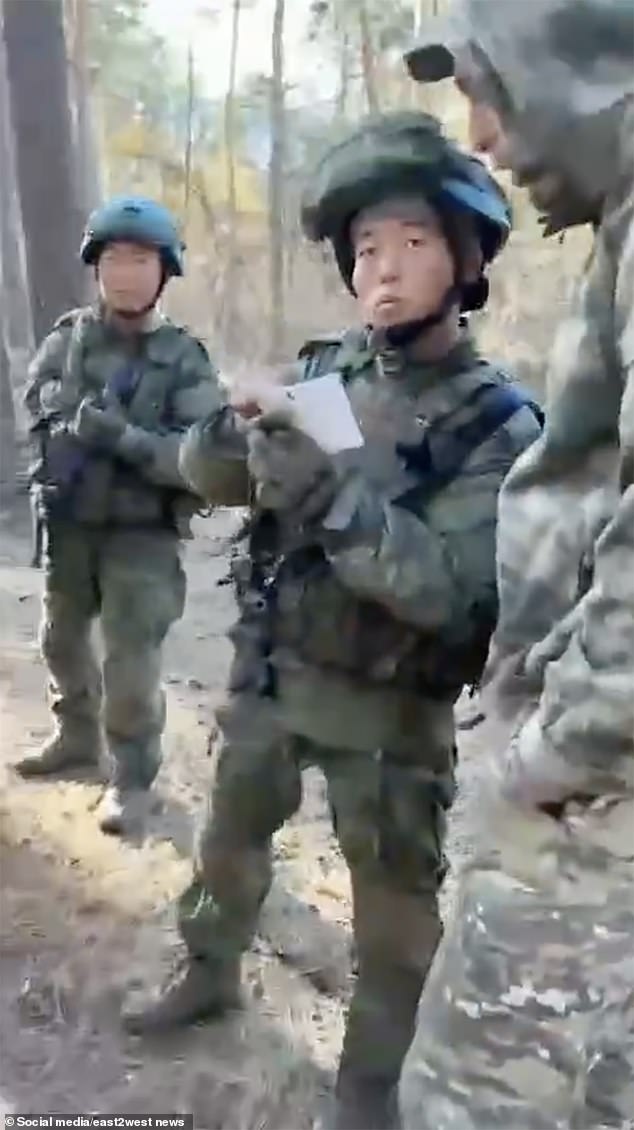
More countries are being drawn into the conflict, such as North Korea, whose troops have been training in Russia, near the border with Ukraine
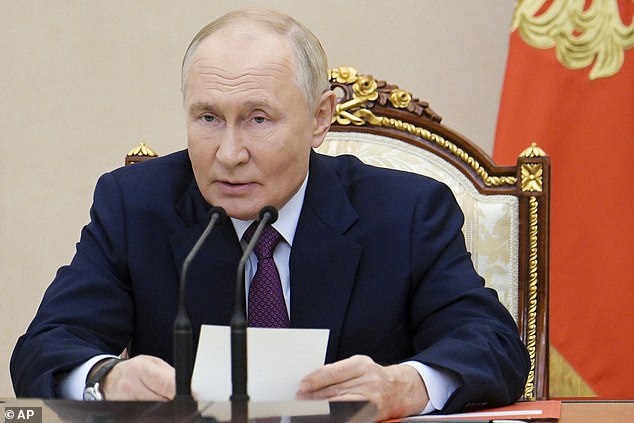
Vladimir Putin warned earlier this month that Russia would respond to any attack from the West with “overwhelming nuclear firepower”
President-elect Donald Trump Jr.’s son has claimed that authorizing the use of ATACMS would start World War III and was a deliberate attempt to thwart his father’s promise to enter the White House within 24 hours of entering House to reach a peace agreement. We can only pray that he is mistaken.
Our own war leader Winston Churchill said that the Americans can always be trusted to make the right decision, but only when they have tried all alternatives.
Whatever happens, the West has little choice but to hold its nerve as the fading Biden administration plays nuclear poker with Putin.
Doing the right thing at the last minute is a strange form of craftsmanship. Leaving the Ukrainians to their fate would have been a worse choice, but the stakes have never been higher.
Mark Almond is director of the Crisis Investigation Institute, Oxford

